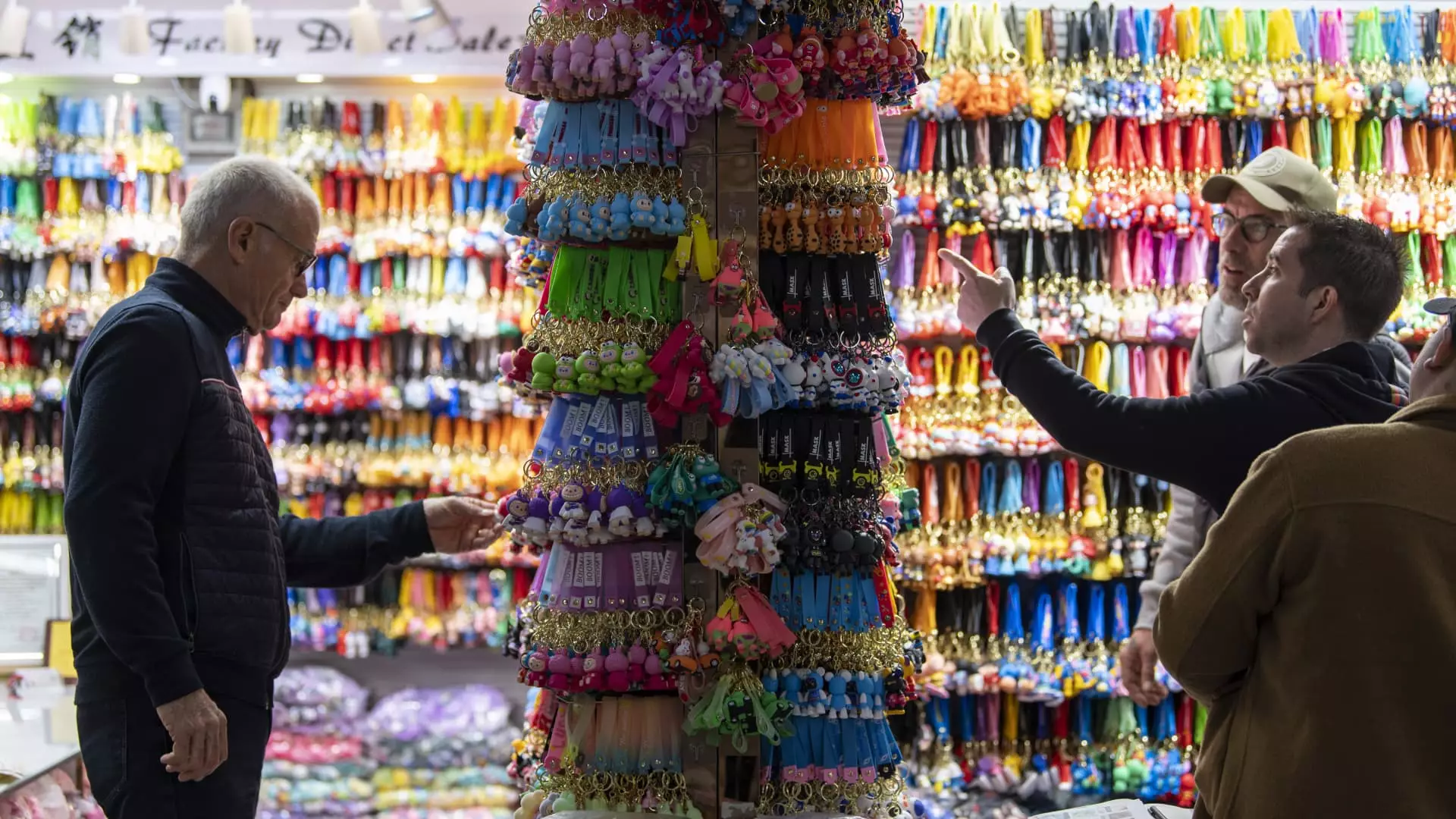The holiday shopping season has always seemed to creep up on Americans, but in recent years, the phenomenon has been noticeably exacerbated as retailers implement tactics to boost their earnings during this crucial period. These strategies often involve introducing Christmas merchandise well before the holiday season kicks off. However, the looming uncertainty of tariffs from ongoing U.S.-China trade tensions threatens to throw a wrench into these preparations. As businesses strive to balance inventory requirements and cost challenges, it becomes increasingly evident that the ramifications of tariff policies extend well beyond mere numbers on a balance sheet—affecting supply chains and consumer experiences alike.
Understanding this context is critical, especially as American retailers face challenges not seen in previous years. Factors such as production delays caused by tariff uncertainties have prompted retailers to either pause or reconsider their orders, which raises questions about how prepared they can truly be for key shopping days like Black Friday and Christmas. Consumers expect a smooth and abundant shopping experience, and any failure to provide could lead to significant financial losses for struggling retailers.
The Supply Chain Squeeze: Reaction from Retailers and Manufacturers
The stakes are incredibly high for both U.S. retailers and Chinese manufacturers as they navigate the choppy waters created by tariff implementations. When tariffs were introduced—some reaching as high as 145%—many U.S. retailers halted their orders from Chinese suppliers, leading factories to pause production. Cameron Johnson, a senior partner at a consulting firm, highlighted the interlinked nature of manufacturing: the consequences of a production halt at one site can reverberate through the entire supply chain. A slowdown for a factory producing a simple item like spoons could halt the entire chain of suppliers, ultimately impacting the components needed to manufacture complex products.
While there is pressure to react to tariffs swiftly, the production cycle, particularly within the electronics sector, is complicated. Industry experts urge that orders must be placed strategically months in advance to ensure timely delivery for holiday shopping. Many companies have effectively stockpiled inventory anticipating increased tariffs, but with the system now throttled by cancellation spikes and reduced orders, the idyllic holiday retail season risks facing significant shortages.
Shifts in Trade Dynamics and Innovative Responses
The critical question arises: How will retailers adapt to these challenges? One answer may lie in more strategic sourcing, as some U.S. importers look to reroute their supply chains through countries that do not carry the same tariff implications. However, for a significant portion of U.S. imports—a staggering 36% of which rely exclusively on Chinese suppliers—this change cannot happen overnight. The complexity of logistics means that while rerouting may appear to offer a solution, it involves intricate planning and coordinated timing that is anything but easy.
Moreover, agility in production is paramount. Many factories have received clearance from large retailers like Walmart and Target to resume manufacturing. This adaptation reflects a willingness among retailers to act quickly, despite a cautious approach due to ongoing tariff negotiations. The strategic entry of smaller orders also reflects a calculated bet on potential tariff reductions or adjustments.
More than just a game of chess with government policy, brands are beginning to understand that the consumer’s expectation for a wide array of products during the festive season remains unyielding. The psychological aspect of having empty shelves versus abundant options can make or break a retailer during the holidays.
Prospective Solutions Amidst Tariff Volatility
Despite the chaos, many retailers are exploring innovative solutions to weather the tariff storm. Some businesses are hedging their bets by partially refilling orders from Chinese factories, thereby avoiding the potential for empty shelves come holiday time while still managing costs. This strategy, however, can lead to increased production expenses if there is a stampede of orders—a situation reminiscent of frantic Black Friday sales.
American buyers are keenly observing every twist in trade negotiations, hoping for remissions on imposed tariffs. Yet, such relief can lead to overloading production if a rush to fill orders occurs simultaneously across multiple retailers. The nuanced interactions between supply chain logistics, production capacity, and consumer demand underscore the precarious balancing act that retailers must perform.
Through strategic foresight, adaptability, and innovative supply chain management, retailers may yet navigate the challenges posed by tariffs. The impending holiday season raises the stakes for all involved, making proactive strategies and collaborative efforts more critical than ever for success across the industry.

